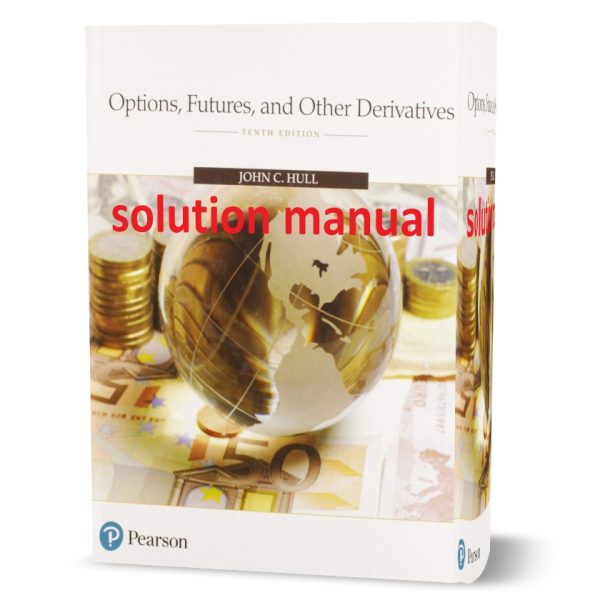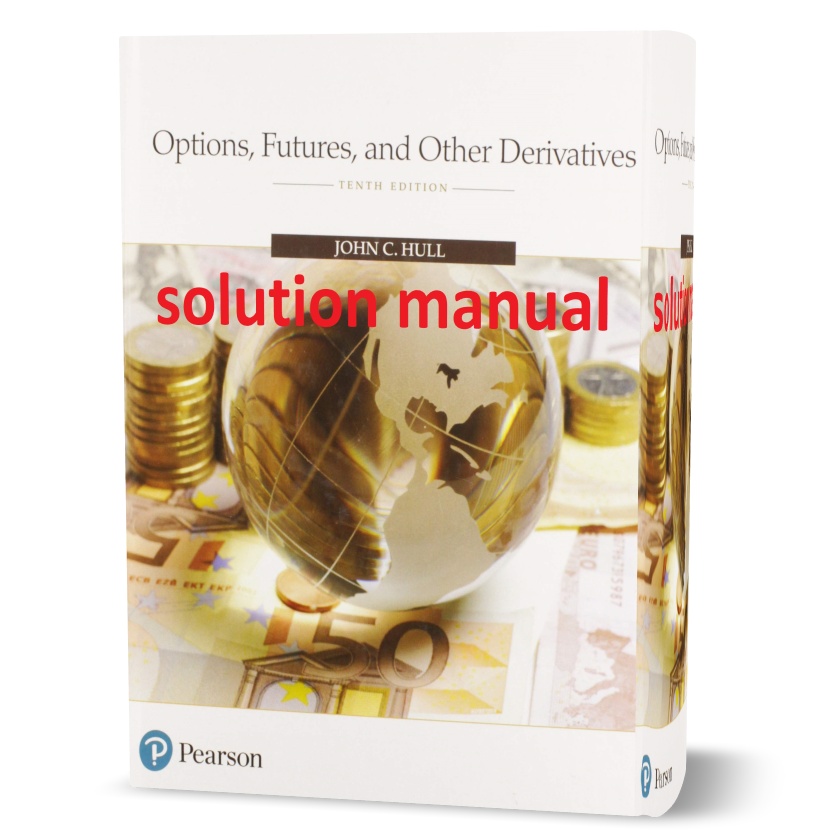Options Futures and other Derivatives 10th edition John Hull solutions manual & Test bank
$15.00 – $21.00
Published: Pearson 2017
Edition: 10th SM ^ 10th TB
Pages: 400 ^ 162
Type: pdf ^ pdf
Size: 17MB ^ 4MB
TB Content: Test Bank is available for chapters 1 to 26 in pdf format
SM Content: The Solution Manual covers all chapters of the textbooks (chapters 1 to 36) and there is one Word file for each of the chapters and Totally has 400 pages. and there is one pdf file for each of the chapters
Solution Sample: sample file
TestBank Sample: sample file
Download After Payment
- Description
- Reviews (0)
Description
Description
It is Download free Options Futures and other Derivatives 10th edition John Hull solutions manual & Test bank | all Chapter answers sometimes hard for me to believe that the first edition of this book was only 330 pages and 13 chapters long! The book has grown and been adapted to keep up with the fast pace of change in derivatives markets. Like earlier editions, the book serves several markets. It is appropriate for graduate courses in business, economics, financial mathematics, and financial engineering. It can be used on advanced undergraduate courses when students have good quantitative skills. Many practitioners who are involved in derivatives markets also find the book useful. I am delighted that the book sells equally well in the practitioner and college markets. for download ebook solutions click here.
Options Futures and other Derivatives 10th edition John Hull solutions manual & Test bank
One of the key decisions that must be made by an author who is writing in the area of derivatives concerns the use of mathematics. If the level of mathematical sophistication is too high, the material is likely to be inaccessible to many students and practitioners. If it is too low, some important issues will inevitably be treated in a rather superficial way. I have tried to be particularly careful about the way I use mathematics in the book. Notation involving many subscripts, superscripts, or function arguments can be off putting to a reader unfamiliar with the material and has been avoided as far as possible. Nonessential mathematical material has been either eliminated or included in the
technical notes on my website and the end-of-chapter appendices. Concepts that are likely to be new to many readers have been explained carefully, and many numerical examples have been included.
Options, Futures, and Other Derivatives can be used for a first course in derivatives or for a more advanced course. There are many different ways it can be used in the classroom. Instructors teaching a first course in derivatives are likely to want to spend most classroom time on the first half of the book. Instructors teaching a more advanced course will find that many different combinations of chapters in the second half of the book can be used. I find that the material in Chapter 37 works well at the end of either an introductory or an advanced course.
Material has been updated and improved
OIS discounting is Download free Options Futures and other Derivatives 10th edition John Hull solutions manual & Test bank | all Chapter answers now used throughout the book. This makes the presentation of the material more straightforward and more theoretically appealing. The valuation of instruments such as swaps and forward rate agreements requires (a) forward rates for the rate used to calculate payments (usually LIBOR) and (b) the risk-free zero curve used for discounting (usually the OIS zero curve). The methods presented can be extended to situations where payments are dependent on any risky rate. In the last 40 years, derivatives have become increasingly important in finance. Futures and options are actively traded on many exchanges throughout the world. Many different types of forward contracts, swaps, options, and other derivatives are entered into by financial institutions, fund managers, and corporate treasurers in the over-the counter market.
New to this edition:
Derivatives are added to bond issues, used in executive compensation plans, embedded in capital investment opportunities, used to transfer risks in mortgages from the original lenders to investors, and so on. We have now reached the stage where those who work in finance, and many who work outside finance, need to understand how derivatives work, how they are used, and how they are priced. Whether you love derivatives or hate them, you cannot ignore them! The derivatives market is huge—much bigger than the stock market when measured in terms of underlying assets. The value of the assets underlying outstanding derivatives transactions is several times the world gross domestic product. As we shall see in this chapter, derivatives can be used for hedging or speculation or arbitrage. They can be used to transfer a wide range of risks in the economy from one entity to another.






Reviews
There are no reviews yet.